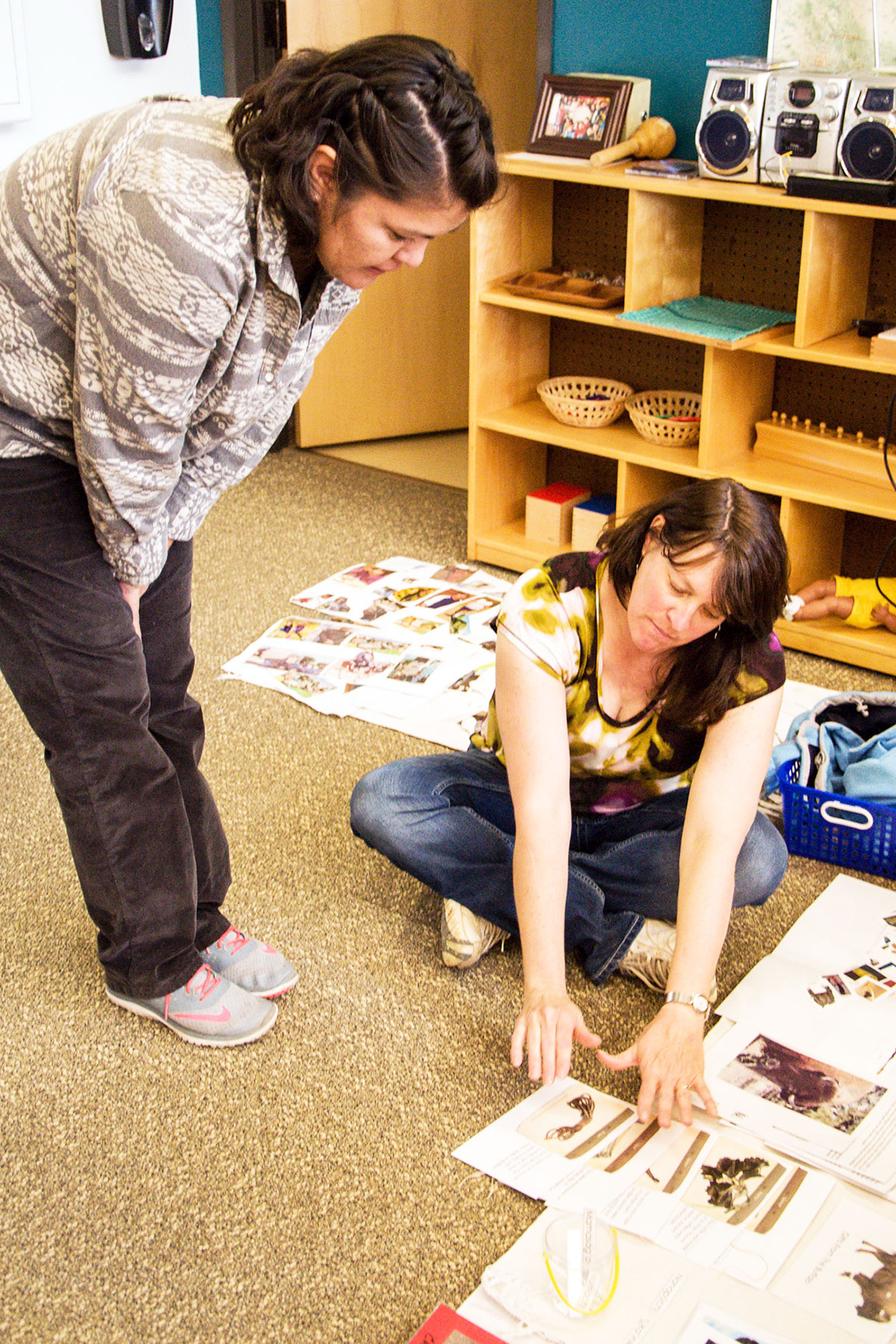Atukach: Growing their Ute language
The infant-toddler level (Atukach) has been growing their Ute language as SUIMA has started a semi-immersive language program. One of the Ute Language teachers spends two weeks at a time in one classroom for most of the morning. Data collection has been occurring and the trends show an increase in the use and understanding in the young students as well as the classroom teachers-guides.
The pre-K/K level (Pawaa) has been focusing on math, language, and science. In every classroom, there are students working busily on their addition, CVC words, reading beginning reader books, and enjoying experiments specific to snow.
The lower elementary level (Kuch) has been learning about fractions through cooking as well as learning about three types of rocks and understanding the difference between rocks and minerals. They also attended the elder storytelling program hosted by the Southern Ute Cultural Center and Museum.
The Upper Elementary students will be holding a couple of fund raisers for their end of the year trip, which will take them to Santa Fe, N.M. where they will tour the Institute of American Indian Arts (IAIA) college, visit an art museum, and enjoy some time at Meow Wolf. With the help of their teacher and a parent volunteer, they are close to reaching their monetary goal.
Due to the weather and school being canceled as a nuvwa-tavay our February Family Night event was moved from Feb. 15 and rescheduled on Feb. 22. The theme of a Valentine Dance was still being followed, and though the crowd was small, everyone (pa’amanuni ) had a wonderful time. This active group has held three fundraisers, with their next one scheduled for March 11 at the SunUte (Tawa-Núuchi) Rec Center.
Montessori Tidbits
In an article out of the magazine Tomorrow’s Child, Sept. 2010, there are some key points regarding Montessori schools. I pulled a few of those points out of the article to put in this edition of the Eagle’s Nest.
Montessori students rarely rely on texts or workbooks because many of the skills and concepts that children learn are abstract and textbooks simply don’t bring them to life. Montessori relies on hands-on concrete learning materials where students can “feel” the math problem and move manipulatives around to help a math problem become alive.
Learning is not focused on rote drill and memorization. The goal is to develop students who really understand their schoolwork.
Students develop a love for the natural world. Natural science and outdoor education is an important elementary of our children’s experience.
Students learn not to be afraid of making mistakes; they come to see their mistakes as natural steps in the learning process.
We are very fortunate to have the Montessori method as the curriculum chosen for SUIMA. If you are not familiar with the Montessori method, I invite you to reach out to the school if you have any questions about what makes it different than the traditional way of teaching.
Positions advertised
Just like schools all over the nation, we have some job openings throughout the school. You can find applications by going to: Southern Ute Indian Tribe Jobs, click on Career Portal – Government, then click on View Current Jobs. It’s as easy as that!
Nuu’apaghapi: Ute phrases and sentences
Even though it may seem like tamaritʉ is around, we are still in tɵmɵri. Repetition helps with the retention of language, please continue using the Ute language at home.
- túu-táa – coat
- sʉpʉrˈa – cold
- ‘agharat’aqh tʉʉravachi? How is the weather?
- Nʉvwayaqh. it is snowing.
- Its muddy – tʉchaghari
- Its turning spring – tamari’iqh
Upcoming events
- Feb. 27 – Elementary students ice skating
- Mar. 8 – March Family Night (possible)
- Mar. 9 – visiting teachers from our Sister Tribes
- Mar. 10 – No School for students – Teacher Workday
- Mar. 13 & 14 – Little Shop of Physics from CSU
- Mar. 20-24 – Spring Break
- Mar. 28 – PAG via Zoom

